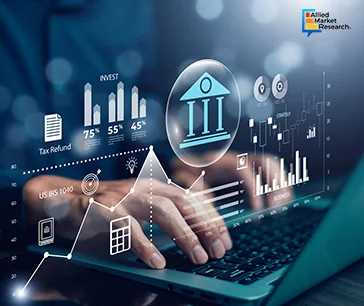Table Of Contents
- The rise of digital-only banks creating favorable conditions for the sectoral growth
- Growing investments in AI and automation opening new avenues for growth
- Rising BaaS adoption boosting industry growth
- Expansion in the private credit landscape helping the sector flourish
- Rising sustainable finance and ESG adoption expanding the sector
- The final word

Onkar Sumant

Koyel Ghosh
Top 5 Trends in BFSI: How Have AI, Sustainable Finance, and BaaS Platforms Reshaped the Sector in Q1 2025?

The advent of the Internet has completely transformed the BFSI domain in the last few decades. Almost all banks and other financial institutions have started using digital technologies to provide their products and services to people living in remote parts of the region as well as the vulnerable sections of the population. Moreover, governments across the globe have launched initiatives to bring marginalized communities in their countries into the formal banking channels. Also, the awareness regarding the importance of different insurance schemes has increased exponentially in the last few years. All these factors have influenced the sector and are expected to continue impacting the landscape positively. This newsletter explores some of these trends and developments that have played a key role in the expansion of the BFSI domain in Q1 2025.
The rise of digital-only bankscreating favorable conditions for the sectoral growth
Digital banks offer various banking and financial services exclusively through digital platforms and devices such as smartphones, tablets, and laptops. Also called Internet-only banks, these institutions have no physical presence and operate 24*7 via these online solutions. The most important reason behind the growing preference for these banks is the convenience they offer to their customers regarding money withdrawal, transfer, and deposit. Moreover, many of these financial institutions have launched mobile applications that allow users to access different services seamlessly. From the banks’ perspective, digital-only platforms help them reduce the cost of their operations, thus expanding their profit margin in the long run.

While the threat of cyberattacks and financial fraud has risen in the past few years, the adoption of advanced cybersecurity solutions to protect customers’ data has increased the popularity of these platforms. The use of intricate encryption technologies has helped these institutions establish comprehensive privacy frameworks that aid in securing financial transactions between different entities. The deployment of emerging technologies such as blockchain has enabled banks to enhance the transparency of their operations, thus improving their credibility and trust among customers.
Growing investments in AI and automation opening new avenues for growth
The introduction of artificial intelligence in banking operations has presented several investment opportunities for leading public and private financial institutions across the globe. AI-powered tools are now being used to detect fraud more efficiently, thus reducing the chances of misappropriation and theft. Moreover, banks are deploying AI solutions to develop advanced application programming interfaces that assist customers in tracking their activities seamlessly. The AI in banking industry accounted for $3.88 billion in 2020 and is predicted to gather a sum of $64.03 billion by 2030, citing a CAGR of 32.6% during 2021-2030.

Along with this, the use of automation to perform certain repetitive and cumbersome activities has helped financial institutions improve their efficiency and productivity in the first quarter of 2025. Moreover, customers are increasingly demanding personalized banking services that cater to their specific needs, which has led to a surge in the adoption of robo-advisors and other such advanced technologies. Recently, many leading investment banks have partnered with AI and machine learning companies to develop state-of-the-art solutions for facilitating a smooth transition to digitalization and automation. The collaborations and alliances have strengthened the foothold of the BFSI domain in Q1 2025.
Rising BaaS adoption boosting industry growth
Banking-as-a-service is a modern business model through which financial institutions offer banking services to non-bank third-party entities via application programming interfaces. Typically, fintech companies use this approach and partner with banks to offer their products to their customers. The rise in demand for personalized banking services is expected to help the banking-as-a-service industry gather a revenue of $60 billion by 2033. The market accounted for $12.2 billion in 2023 and is anticipated to rise at a CAGR of 17% during 2024-2033. The growing use of advanced technologies such as blockchain has created numerous growth opportunities in the landscape in Q1 2025.

For banks, the BaaS model has proved to be beneficial as it helps them diversify their income sources and ultimately increase their revenue. Moreover, the cost of operation is reduced drastically as the capital investments in digital technologies are done by third-party vendors. Several studies done in this field have shown that more than 80% of bank users prefer personalized financial services. Since the banking-as-a-service approach offers unique customer insights, these institutions are able to cater to the demands of their audience base more holistically, thus enhancing their brand value in the long run. As far as fintech companies are concerned, BaaS platforms help them launch their services quickly without having to wait for infrastructure development.
Expansion in the private credit landscapehelping the sector flourish
Ever since the COVID-19 pandemic broke out in 2020, there has been a recessionary trend in the global economy. Declining confidence, lower consumption, and supply chain issues have reduced global money supply. At the same time, the rise in the number of non-performing assets in leading investment banks has compelled financial institutions to restrict their lending. In such a scenario, small and medium-scale businesses have started accessing funds offered by non-banking lenders, thus expanding the scope of the private credit landscape in Q1 2025.

Over the years, the private student loans industry is another area where non-bank credit schemes have gained a lot of popularity. The rising cost of graduate and professional programs has played an important role in the growth of the market. Since the loan amount offered by federal financial institutions exceeds these expenses, students have started opting for private credit schemes. In countries like the US, Japan, Germany, South Korea, China, India, and Brazil, the demand for private education loans has escalated significantly, thereby increasing the footprint of the BFSI sector in the first quarter of 2025.
Rising sustainable finance and ESG adoption expanding the sector
Sustainable finance refers to investment, fiscal, and monetary decisions that take into consideration the environmental, social, and governance (ESG) goals. The growing awareness regarding sustainability has compelled banks to make conscious efforts to fund such projects that have minimal impact on the environment and help decarbonize the economy. Recently, many leading financial institutions have established specific norms and regulations that their clients have to adhere to for receiving loans and capital for their operations.

The concept of sustainable finance has proved to be hugely beneficial in reducing waste generation and carbon emissions in many industrial towns and urban areas across the globe. Furthermore, by promoting the circular economy model, this new financing mechanism has promoted resource optimization, thereby lowering the dependence on natural resources and biodiversity. Due to these factors, the sustainable finance industry is expected to amass a sum of $22485.6 billion by 2031. The market was valued at $3650 billion in 2021 and is projected to rise at a CAGR of 20.1% during 2022-2031.
The final word
The increasing adoption of digital technologies by banks across the globe has been the key driver of BFSI sector growth in Q1 2025. The shift toward private credit schemes and the surge in popularity of BaaS platforms has generated numerous profitable opportunities for the domain. In addition, the expansion of the sustainable finance market and the integration of innovations like AI and machine learning are anticipated to expand the footprint of the landscape in the near future.
Contact our experts for more insights into the latest developments and advancements in the BFSI industry!

